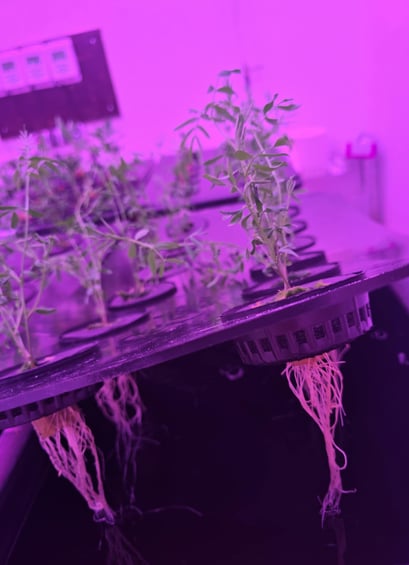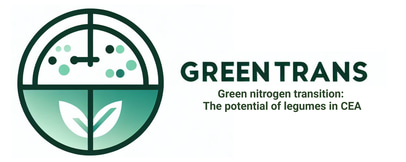The EU bio-economy strategy aims to tackle climate change by promoting the use of more wood- and crop-based biomass. The goal is to transition towards a low-carbon and resource-efficient society that relies more on renewable resources and less on fossil fuels (Carstensen et al., 2023). Due to climate change, the growing agricultural production season in the Baltic-Nordic region is getting longer. Some examples in the review (Nainggolan et al., 2023) include the need to shift to new crops and change from spring-sown to winter-sown crops. Additionally, studies have shown that altering land allocation could effectively respond to anticipated shifts in climatic suitability for crop production in the north (Iglesias et al., 2012; Olesen and Bindi, 2002; Wiréhn, 2018; Nainggolan et al., 2023). However, increasing productivity poses a significant problem: the increased use of fertilizers, especially nitrogen (N). The productivity of many crops relies heavily on N fertilizers, with the production and usage of N contributing to about 5% of the world's greenhouse gas (GHG) emissions (Gao and Cabrera, 2023; Kamran et al., 2023). Farmers use an average of 50-110 N kg/ha per year, and agricultural land is about 12.6 M ha in the Baltic-Nordic region, showing still high consumption of mineral N fertilizers apart from the number of indoor horticulture and vertical farms, where large amounts of N fertilizers are also used. A large part of GHG emissions is made up of transportation, as Baltic-Nordic region countries import about 50% of N fertilizers from North Africa (Egypt, Algeria) and Eastern Europe (Belarus, Russia, and Ukraine) (Agriculture and Rural Development studies and reports, 2023). In addition, the Haber-Bosch process is responsible for over 96% of the world's ammonia production (Smith et al., 2020) and relies heavily on fossil fuels such as natural gas (50%), oil (31%), and coal (19%). Due to the high energy demand of this process, it has a significant environmental impact and contributes to increasing GHG emissions. These issues demand urgent implementation of circular economy practices across all sectors, reducing carbon emissions by 45% by 2030 and aiming for carbon neutrality by 2050 (Yang et al., 2023). Identifying and prioritizing interventions that cover the entire fertilizer life cycle (Gao and Cabrera, 2023), seeking to reduce the effects of climate change. Scientists have analyzed the global flows of synthetic N fertilizers and manure and their corresponding GHG emissions at each stage of their life cycle. Research reveals that around two-thirds of fertilizer emissions occur after their use in croplands. The most effective strategy to reduce emissions is to increase nitrogen-use efficiency, and this must be coupled with the decarbonization of fertilizer production (Gao and Cabrera, 2023).
Background


References
Agriculture and rural development studies and reports (2023). https://agriculture.ec.europa.eu/cap-my-country/performance-agricultural-policy/studies-and-reports_en. Accessed 24 Nov 2023
Carstensen MV, et al., (2023) Modelling the impact of the Nordic Bioeconomy Pathways and climate change on water quantity and quality in a Danish River Basin. CATENA 222:106795. https://doi.org/10.1016/j.catena.2022.106795
Gao Y, Cabrera Serrenho A (2023) Greenhouse gas emissions from nitrogen fertilizers could be reduced by up to one-fifth of current levels by 2050 with combined interventions. Nat Food 4:170–178. https://doi.org/10.1038/s43016-023-00698-w
Haris M, et al., (2023) Application of microbial inoculants as an alternative to chemical products for decomposition of organic wastes. In: Microbial Inoculants. Elsevier, pp 29–52. https://doi.org/10.1016/B978-0-323-99043-1.00006-2
Hata N, Futamura H (2020) Production of Soybean Plants for Hydroponic Cultivation from Seedling Cuttings in a Medium Containing Rhizobium Inoculum Depending on Various Concentrations of Nutrient Solution and Different Nitrogen Sources. Journal of Horticultural Research 28:71–82. https://doi.org/10.2478/johr-2020-0015
Iglesias A, et al., (2012) A regional comparison of the effects of climate change on agricultural crops in Europe. Climatic Change 112:29–46. https://doi.org/10.1007/s10584-011-0338-8
Imsande J (1988) Interrelationship Between Plant Developmental Stage, Plant Growth Rate, Nitrate Utilization and Nitrogen Fixation in Hydroponically Grown Soybean. J Exp Bot 39:775–785. https://doi.org/10.1093/jxb/39.6.775
Kamran M, et al., (2023) Assessment of greenhouse gases emissions, global warming potential and net ecosystem economic benefits from wheat field with reduced irrigation and nitrogen management in an arid region of China. Agriculture, Ecosystems & Environment 341:108197. https://doi.org/10.1016/j.agee.2022.108197
Karavidas I, et al., (2023) Hydroponic Common-Bean Performance under Reduced N-Supply Level and Rhizobia Application. Plants 12:646. https://doi.org/10.3390/plants12030646
Kontopoulou C, et al., (2017) Impact of rhizobial inoculation and reduced N supply on biomass production and biological N 2 fixation in common bean grown hydroponically. J Sci Food Agric 97:4353–4361. https://doi.org/10.1002/jsfa.8202
Kontopoulou C-K, et al., (2015) Responses of Hydroponically Grown Common Bean Fed with Nitrogen-free Nutrient Solution to Root Inoculation with N2-fixing Bacteria. horts 50:597–602. https://doi.org/10.21273/HORTSCI.50.4.597
Kontopoulou CK, et al., (2016) Responses of hydroponically-grown common bean to N-starvation combined by root inoculation with N 2 -fixing bacteria. Acta Hortic 31–36. https://doi.org/10.17660/ActaHortic.2016.1142.5
Nainggolan D, et al., (2023) The impact of climate change on crop mix shift in the Nordic region. Sci Rep 13:2962. https://doi.org/10.1038/s41598-023-29249-w
Smith C, et al., (2020) Current and future role of Haber–Bosch ammonia in a carbon-free energy landscape. Energy Environ Sci 13:331–344. https://doi.org/10.1039/C9EE02873K
Olesen JE, Bindi M (2002) Consequences of climate change for European agricultural productivity, land use and policy. European Journal of Agronomy 16:239–262. https://doi.org/10.1016/S1161-0301(02)00004-7
Talukder MdR, et al., (2020) Alleviation of allelochemical stress-induced growth inhibition and oxidative damage in lettuce under closed hydroponics through electro-degradation. Hortic Sci 47:53–68. https://doi.org/10.17221/32/2019-HORTSCI
Thilakarathna M, Raizada M (2018) Challenges in Using Precision Agriculture to Optimize Symbiotic Nitrogen Fixation in Legumes: Progress, Limitations, and Future Improvements Needed in Diagnostic Testing. Agronomy 8:78. https://doi.org/10.3390/agronomy8050078
Virk AL, et al., (2022) Simultaneous effects of legume cultivation on carbon and nitrogen accumulation in soil. In: Advances in Agronomy. Elsevier, pp 75–110. https://doi.org/10.1016/bs.agron.2021.08.002
Wiréhn L (2018) Nordic agriculture under climate change: A systematic review of challenges, opportunities and adaptation strategies for crop production. Land Use Policy 77:63–74. https://doi.org/10.1016/j.landusepol.2018.04.059
Yang M, et al., (2023) Circular economy strategies for combating climate change and other environmental issues. Environ Chem Lett 21:55–80. https://doi.org/10.1007/s10311-022-01499-6
